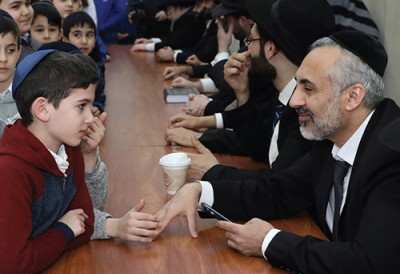
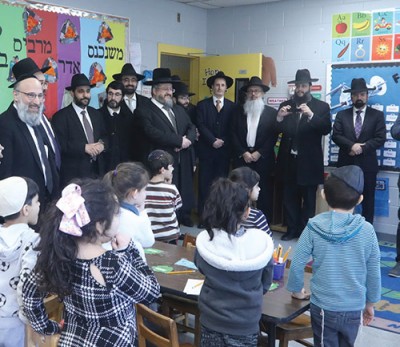
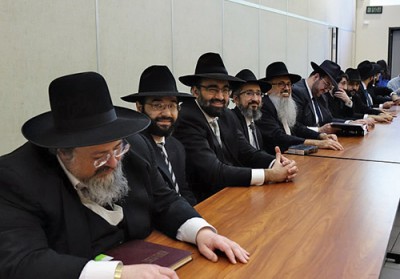
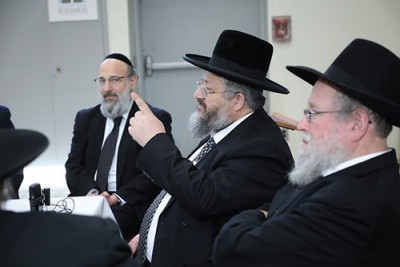
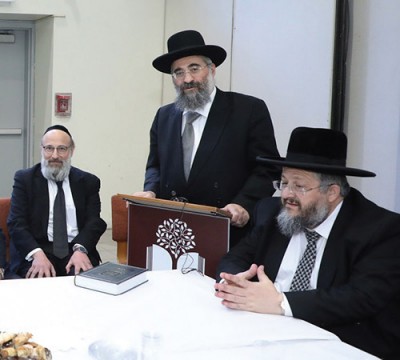

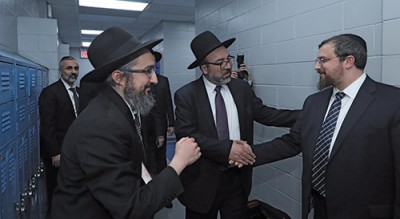
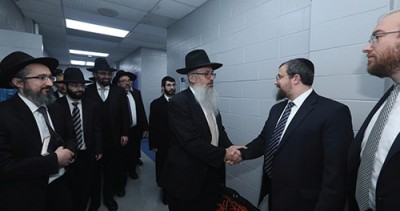

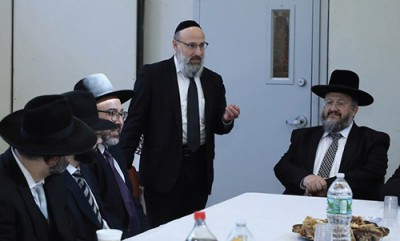

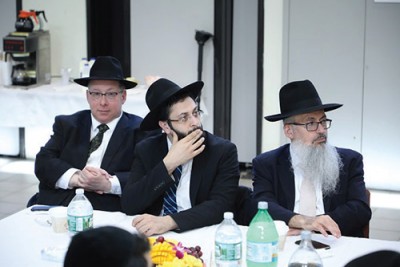
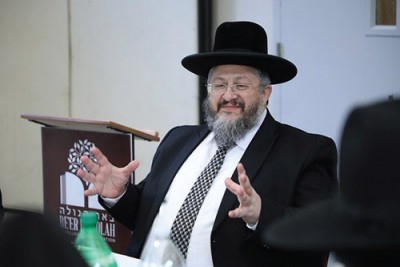
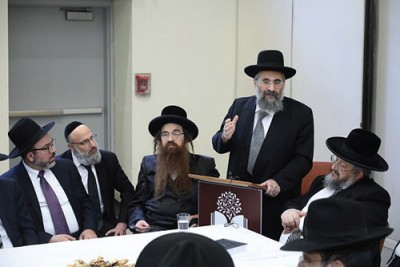
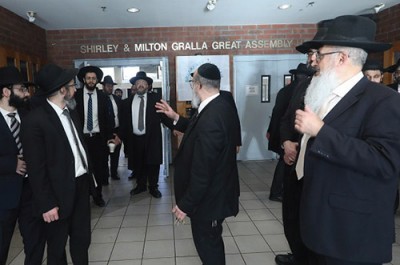
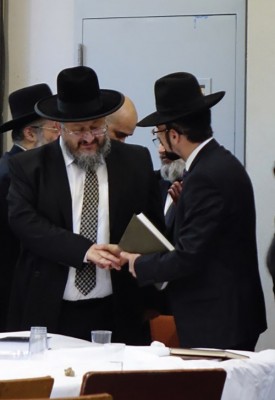
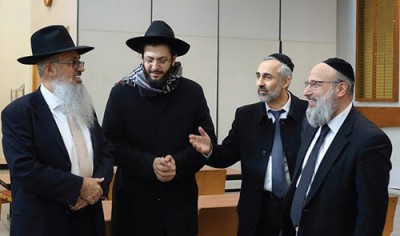
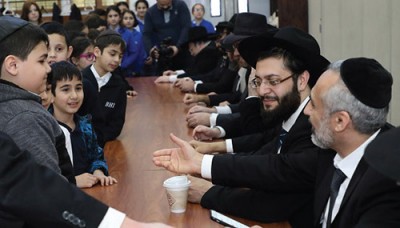
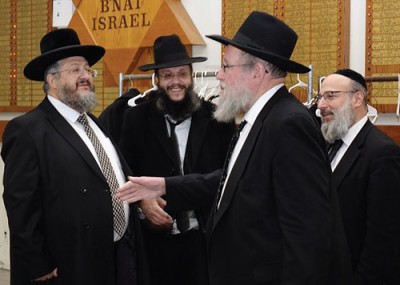
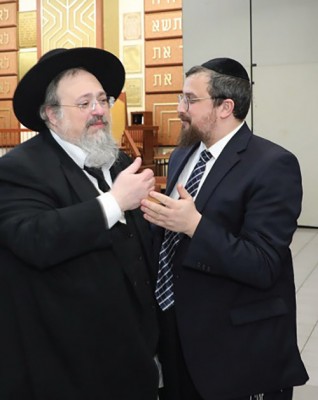

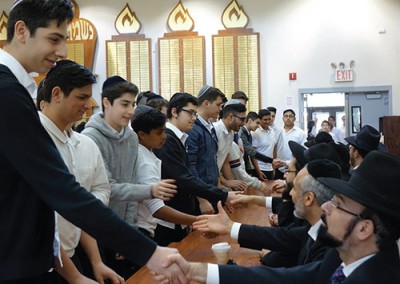
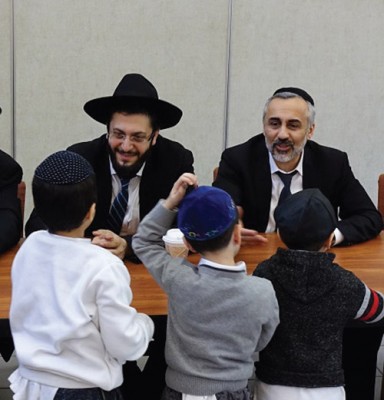
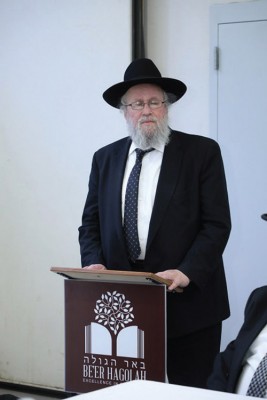
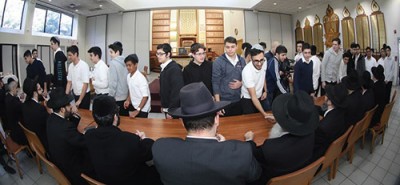

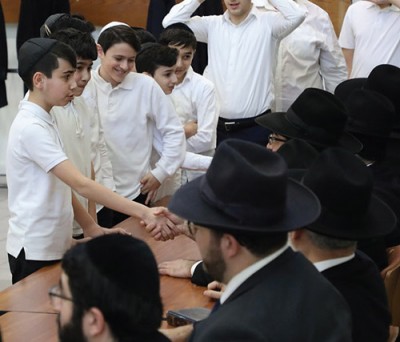

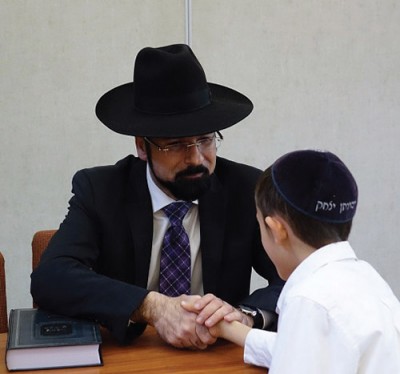

On a sunny but blustery Monday afternoon, a delegation of 24 Bukharian Rabbonim entered the Be’er Hagolah Yeshiva building at 671 Louisiana Avenue. In fact, they had been invited by the Chief Rabbi of the Bukharian community in USA and Canada, Rabbi Yitzhak Yisraeli and encouraged to make every effort to attend this meeting. The letter sent to each Rov, read in part, “As a Rav in the community it is important to us that you have first-hand knowledge of the education offered at Be’er Hagolah… Please make every effort to attend this important meeting.”
The Rabbonim were to be, in the Rav’s words, “honored to meet together with the Rosh Yeshiva of Yeshivat Mir, Rav Elya Brudne Shlit”a.”
After entering the Yeshiva building, the distinguished group was welcomed by the Rosh Yeshiva of the Mir, Horav Elya Brudny, shlita, Chairman of the Va’ad Hachinuch of Be’er Hagolah and Horav Mordechai German, shlita, the Dean of Be’er Hagolah.
The Rabbonim were visibly moved and impressed with what they saw when they entered the building. One after another expressed his astonishment at the size of the building and how spotlessly clean it was. They said they had certainly heard about Be’er Hagolah but they had no idea how large the building was and that it was kept up so well.
After a very brief ‘Meet and Greet’ in the Shul, knowing that the Rabbonim were on a tight schedule, Rabbi German began the tour heading to the elementary school division, run by Ms. Zucker who spoke to them about the curriculum and the high standards of education which the school maintains.
The next stop was the Girls middle and high school departments, headed by Mrs. Taub, on the second floor. It was clear to any onlooker that the girls were aware of the zechut they were being given. They stood quietly and respectfully, knowing full well how to demonstrate their Kovod HaTorah. Horav Brudny and Horav Yisraeli extended their personal blessings, wishing the talmidos hatzlacha in their Torah studies and ma’asim tovim.
Harav Yitzchak Yisraeli, Bukharian Chief Rabbi spoke to the assembled Rabbonim. He emphasized how important a Yeshiva Education was for any Jewish child. He said, “Children are Kodesh Kedoshim and we are responsible for them”. Rabbi Avraham Nissanian said, “I am totally impressed, I parked my car and saw beauty. Beautiful facilities”….. “My dream for the Bukharian community is that we continue the beautiful Sephardic traditions at Be’er Hagolah.
Rav Yirmi Levy said, “We see with our own eyes the long term results of investing in these beautiful children. I couldn’t leave, to see the beautiful atmosphere and the love for the yeshiva and rabbanim. To see children from my kehillah, how they looked three years ago and how they look today. Today I see pure diamonds.”
Rav Rafael Zavulunov said, “Happy children. Derech eretz. Refreshing to see smiles on their faces.
The Rabbonim were then invited to proceed to the Shul for a meeting to discuss the all-important topic of the chinuch needs of the Bukharian community in general. Horav Brudny and Horav German then enlightened the Rabbonim as to how Be’er Hagolah is meeting those needs.
A very poignant part of the afternoon was when the talmidim and talmidos of all divisions-elementary girls, elementary boys, high school boys and high school girls- came into the Shul to pay their respect to the Rabbonim. The boys extended their hands in greeting to the Rabbonim, many bending to kiss their hands in a special display of Kovod HaTorah.
Be’er Hagolah has been educating the sons of daughters of Bukharian families in Brooklyn and Queens for many years. Each day 13 busses – separate for boys and girls – pull up in front of their respective entrances for another day of learning Torah followed by an afternoon of secular studies, leading up to a Regents diploma and admission to college.
This very special visit will surely go down in history as a day when observations were made, and decisions were implemented, all for the purpose of Kovod HaTorah.
Bukharian Rabbis Summit At Be’er Hagolah
Typography
- Smaller Small Medium Big Bigger
- Default Helvetica Segoe Georgia Times
- Reading Mode


